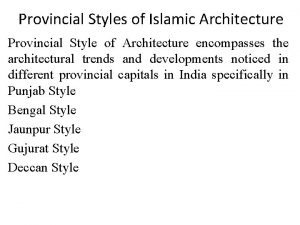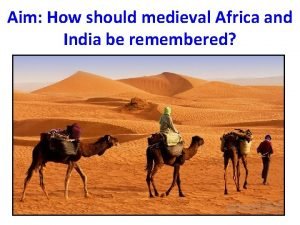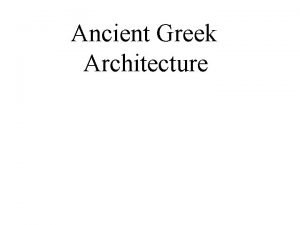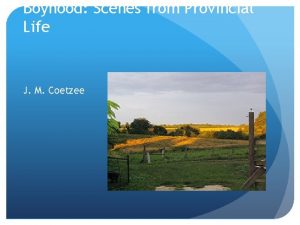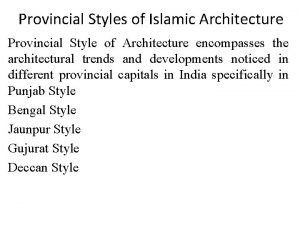Provincial Styles of Islamic Architecture Provincial Style of











- Slides: 11

Provincial Styles of Islamic Architecture Provincial Style of Architecture encompasses the architectural trends and developments noticed in different provincial capitals in India specifically in Punjab Style Bengal Style Jaunpur Style Gujurat Style Deccan Style

Shah Rukn-i-Alam Location : Multan Fort, Punjab History: The tomb of Shah Rukn-i-Alam was built by the Tughluq ruler of Delhi, Ghiyasud- din, between 1320 and 1324 AD Descriptions 1. The three-tier structure 2. It is octagonal in shape with an interior diameter of 15 metres walls assisted by 8 engaged corner towers or buttresses with a clear slope, support an 8 metre octagon surmounted by a dome with a diameter of 15 metres

3. The 35 metre high structure is constructed in red brick with a visible framework of beams of shisam wood. 4. The exterior is further ornamented with the use of carved brick and wood as well as blue and white faience mosaic tiles with raised relief patterns. 5. The octagon is decorated with geometric, floral and arabesque designs and calligraphic motifs.


Atala Masjid

Chota Sona Masajid

History 1. The Chhota Sona Mosque, also referred as the Small Golden Mosque 2. Built between 1494 and 1519 during the years of Sultan Husain Shah’s rule Location 1. Located in Chapai Nawabganj district of Bangladesh. 2. favorite attraction for tourists visiting Bangladesh.

Descriptions 1. Fifteen domes adorn the roof of the building, with four corner towers bringing together the rectangular structure. 2. The mosque was erected in brick and black stone and the difference in materials can be clearly seen at the start of the domes, as the transition from one material to another is visible at this point.

History: ü Built by Shams-ud-Din Ibrahim in A. D. 1408 on the foundation built by Firuz Shah Tughlaq 30 years before. ü Built on the site of the Atala Devi temple whose materials along with those of other temples were used in its construction. Descriptions q The mosque consists of a square courtyard of side with cloisters on 3 sides and the sanctuary on the fourth (western) side. q Cloisters are spacious across and divided into 5 aisles. q There are 3 entrance gateways, one in the centre of each cloister, with the northern and southern ones surmounted by domes.

Jama Masjid • Jama Masjid (Friday Mosque), built in 1423 during the reign of Ahmedabad’s founder Ahmed Shah I. • Built with yellow sandstone, the mosque complex is centered on a large rectangular courtyard 75 m long and 66 m wide.

• The prayer room is also rectangular and covered by four domes. • Some of the central domes are carved like lotus flowers, closely related to the typical domes of Jain temples • Some of the pillars are carved with the form of a bell hanging on a chain, in reference to the bells that often hang in Hindu temples. • The two principal minarets flanking the main arched entranceway collapsed in the 1819 earthquake
 Chota sona masjid plan
Chota sona masjid plan Islamic architecture in africa
Islamic architecture in africa Doric ionic and corinthian
Doric ionic and corinthian Batch sequential architecture
Batch sequential architecture Provincial achievement tests
Provincial achievement tests Governo provincial do cuanza norte
Governo provincial do cuanza norte Provincial hours of service
Provincial hours of service Provincial salary rate
Provincial salary rate Grade 7 provincial math assessment
Grade 7 provincial math assessment Provincial medical oversight
Provincial medical oversight Provincial life definition
Provincial life definition Provincial exam essay sample
Provincial exam essay sample
